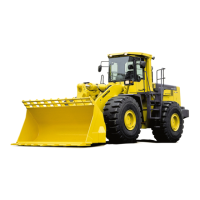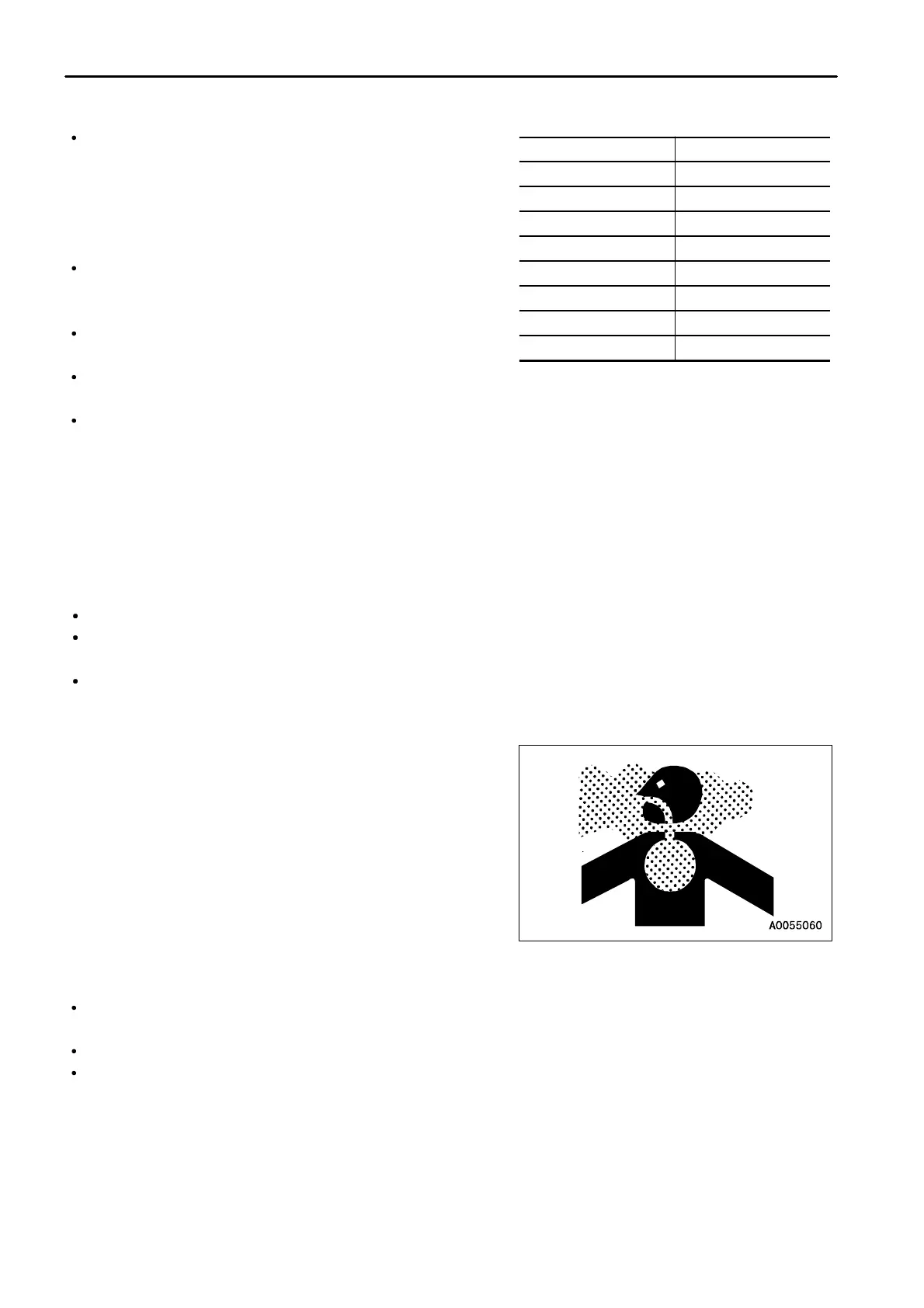.
SAFETY
GENERAL PRECAUTIONS
SAFETY
GENERAL PRECAUTIONS
SAFETY
GENERAL PRECAUTIONS
Voltage of Cables Safety Distance
100 V - 200 V Over 2 m (7 ft)
6,600 V Over 2 m (7 ft)
22,000 V Over 3 m (10 ft)
66,000 V Over 4 m (14 ft)
154,000 V Over 5 m (17 ft)
187,000 V Over 6 m (20 ft)
275,000 V Over 7 m (23 ft)
500,000 V Over 11 m (36 ft)
Even going close to high-voltage cables can cause electric
shock, which may cause serious burns or even death. Always
maintain a safe distance (see the table on the right) between the
machine and the electric cable. Check with the local power
company about safe operating procedure before starting
operations.
To prepare for any possible emergencies, wear rubber shoes
and gloves. Lay a rubber sheet on top of the seat, and be careful
not to touch the chassis with any exposed part of your body.
Use a signalman to give warning if the machine approaches too
close to the electric cables.
When carrying out operations near high voltage cables, do not
let anyone near the machine.
If the machine should come too close or touch the electric cable,
to prevent electric shock, the operator should not leave the
operator's compartment until it has been confirmed that the
electricity has been shut off.
Also, do not let anyone near the machine.
ENSURE GOOD VISIBILITY
Check for any persons or obstacles in the area around the machine and check the conditions of the jobsite to ensure
that operations and travel can be carried out safely. Always do as follows.
Position a signalman if there are areas at the rear of the machine where the visibility is not good.
When working in dark places, turn on the working lamp and front lamps installed to the machine, and set up
additional lighting in the work area if necessary.
Stop operations if the visibility is poor, such as in mist, snow, rain, or dust.
PRECAUTIONS RELATED TO VENTILATION EXHAUST GAS
The engine exhaust gas contains substances that may damage
your health or even cause death. Start or operate the engine in a
place where there is good ventilation. If the engine or machine
must be operated inside a building or under ground, where the
ventilation is poor, take steps to ensure that the engine exhaust
gas is removed and that ample fresh air is brought in.
CHECKING SIGNALMAN'S SIGNALS AND SIGNS
Set up signs to inform of road shoulders and soft ground. If the visibility is not good, position a signalman if
necessary. Operators should pay careful attention to the signs and follow the instructions from the signalman.
Only one signalman should give signals.
Make sure that all workers understand the meaning of all signals and signs before starting work.
EMERGENCY EXIT FROM OPERATOR'S CAB
Machines equipped with a cab have doors on the left and right sides. If the door on the one side does not open,
escape from the door on the other side.
2 - 20

